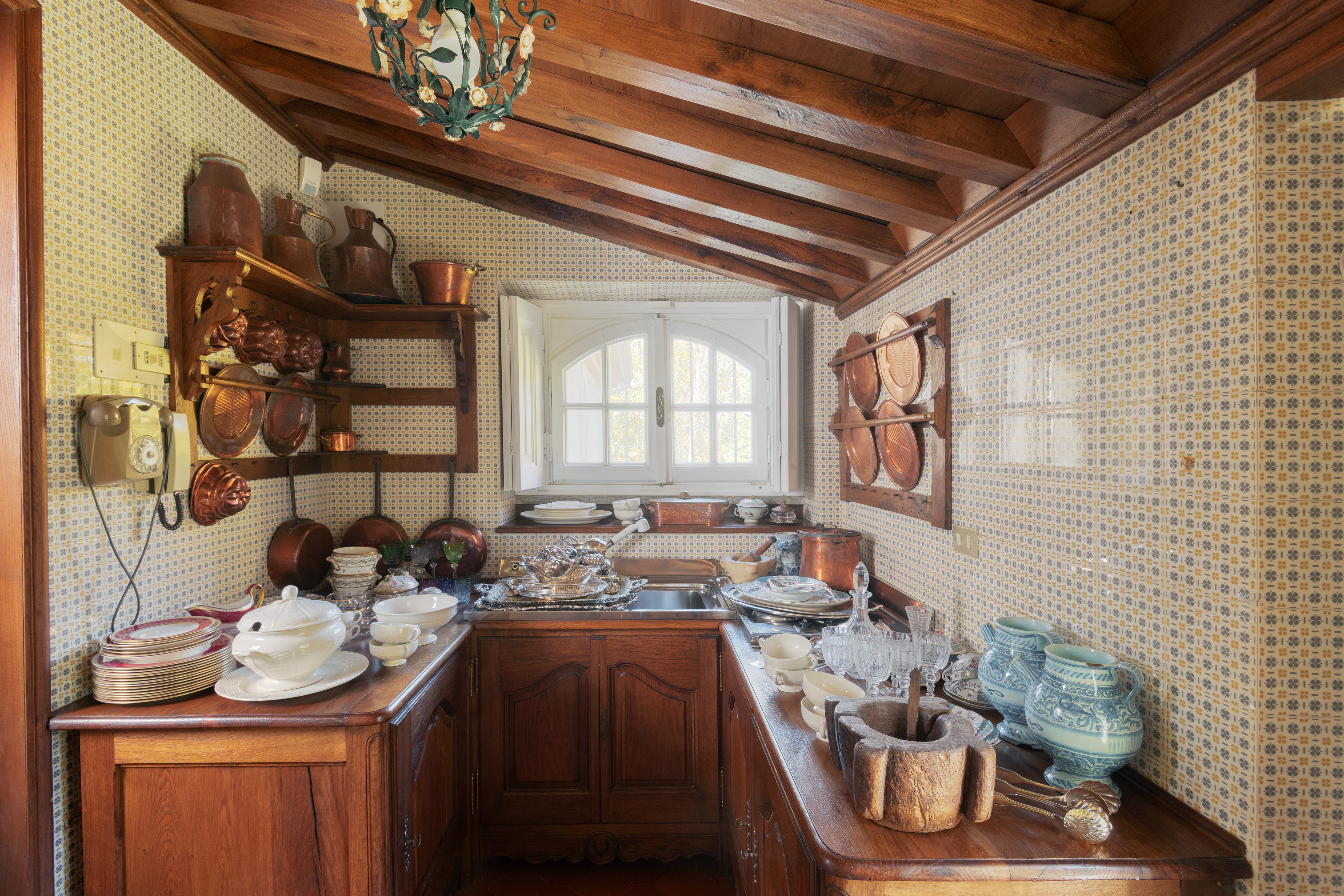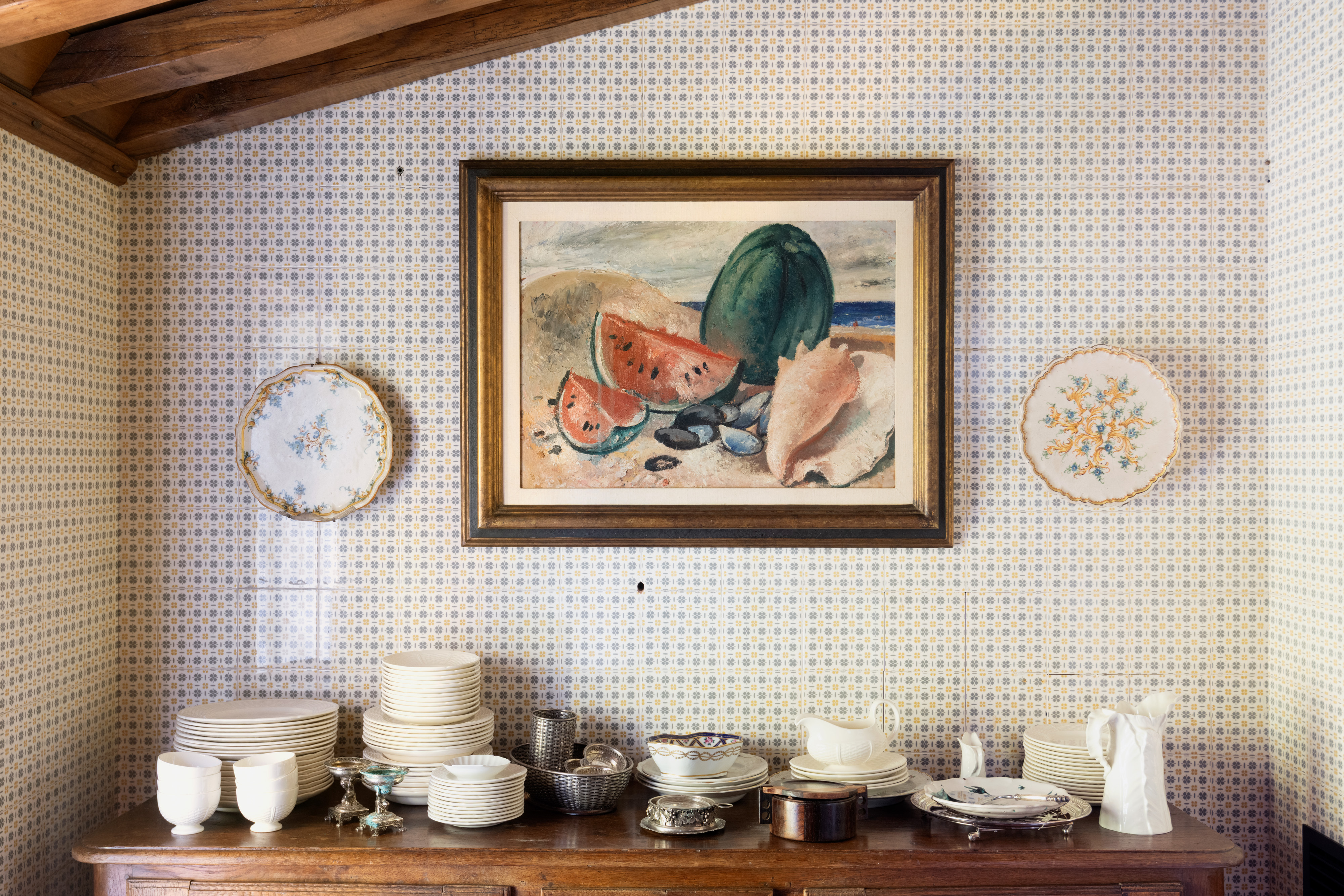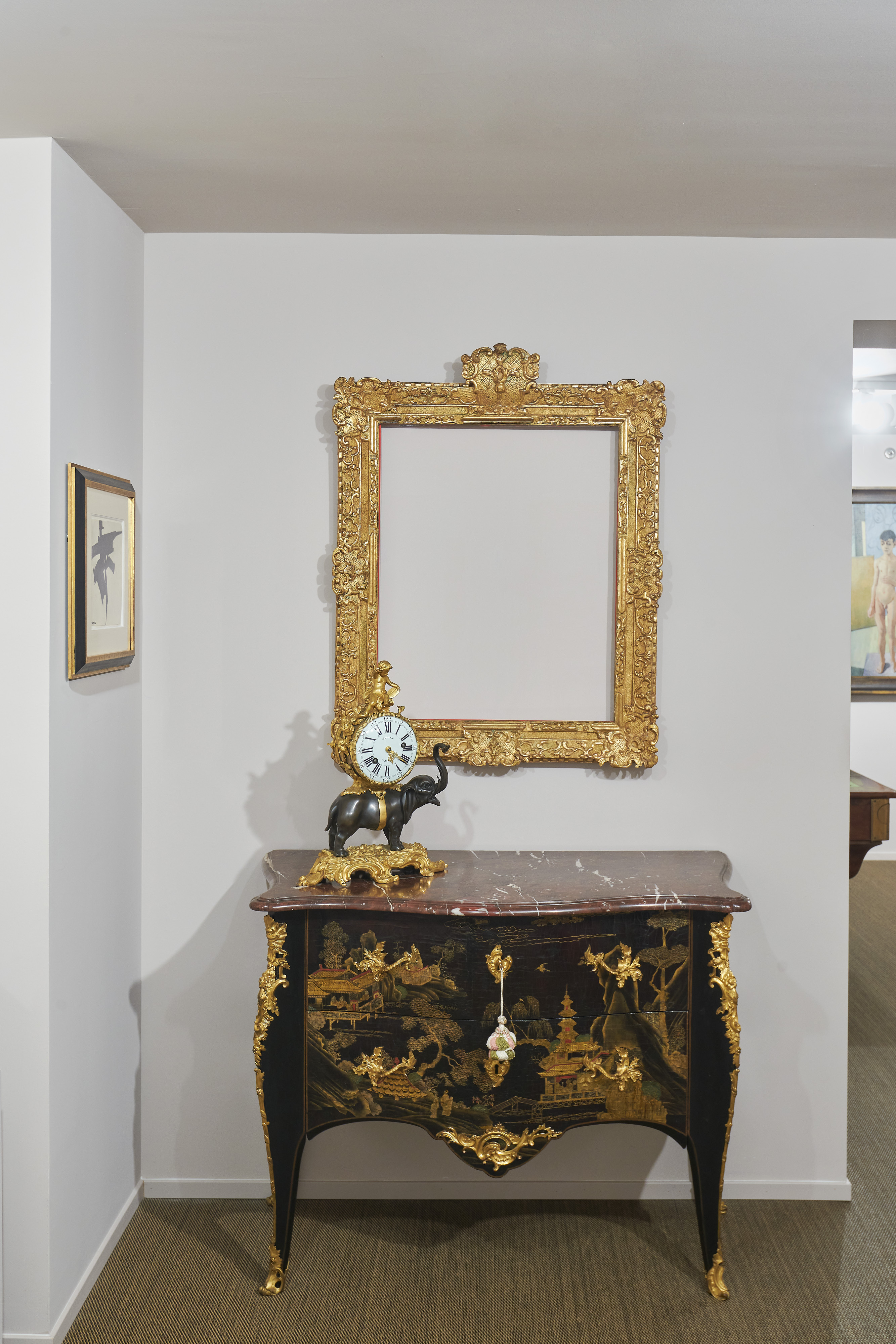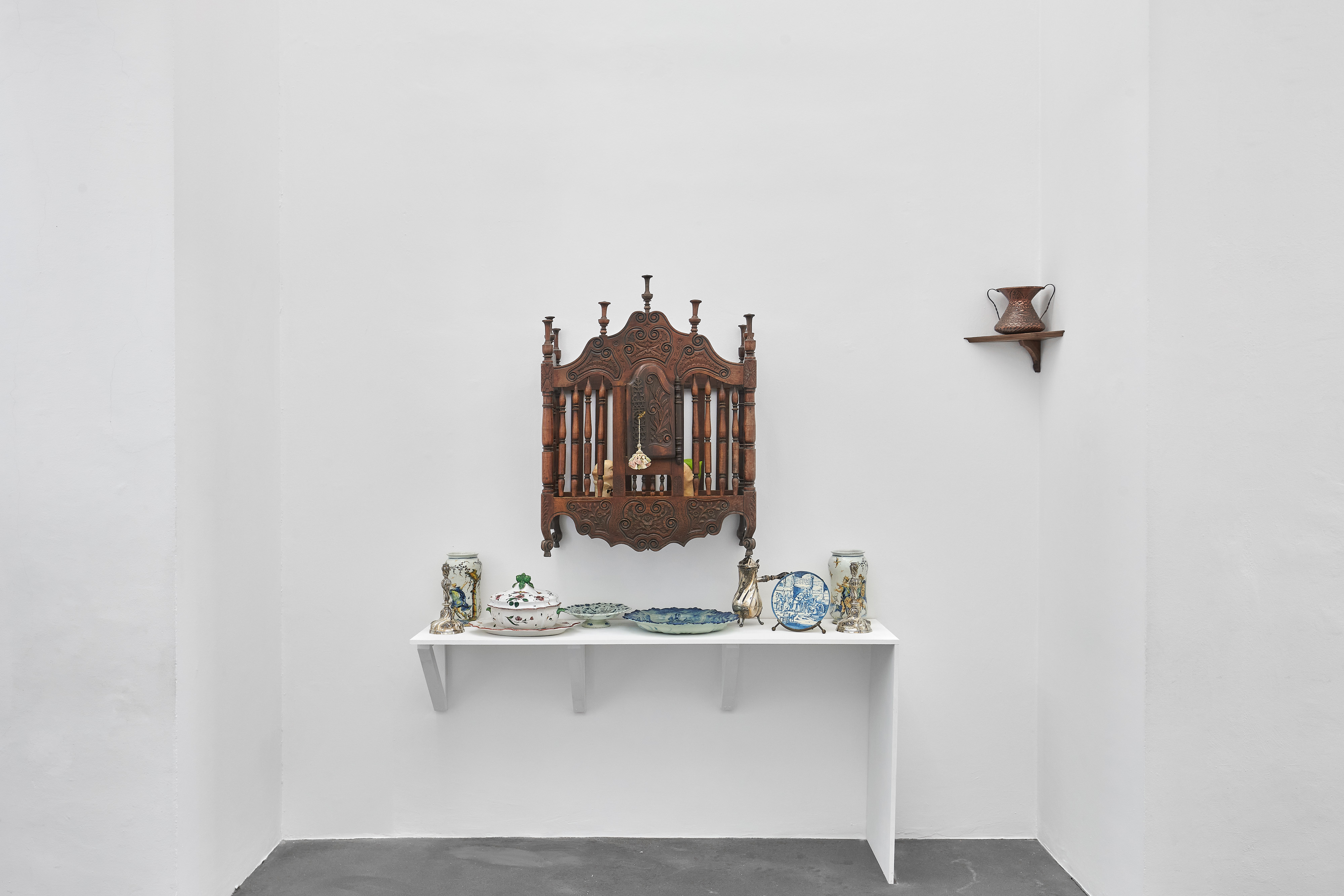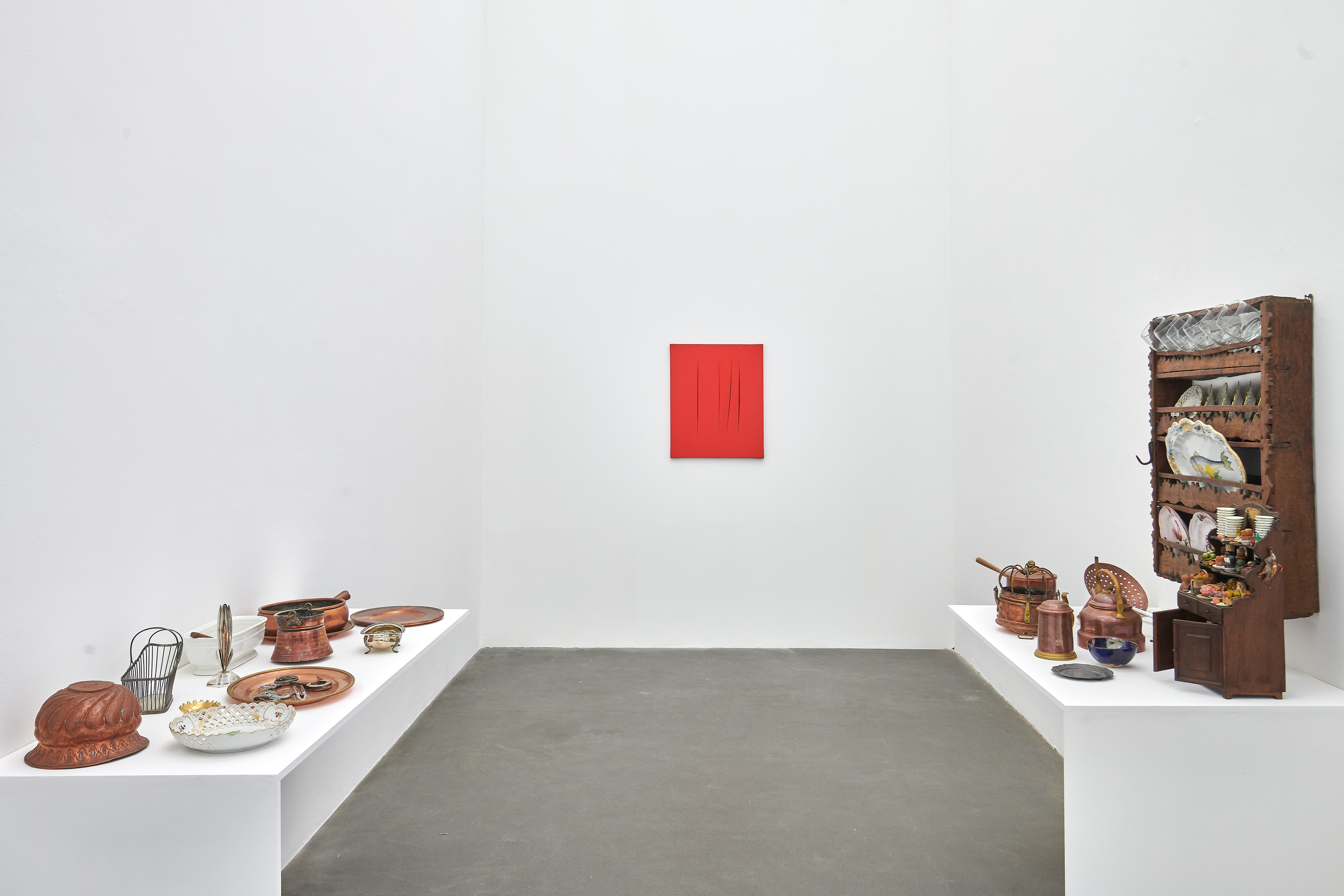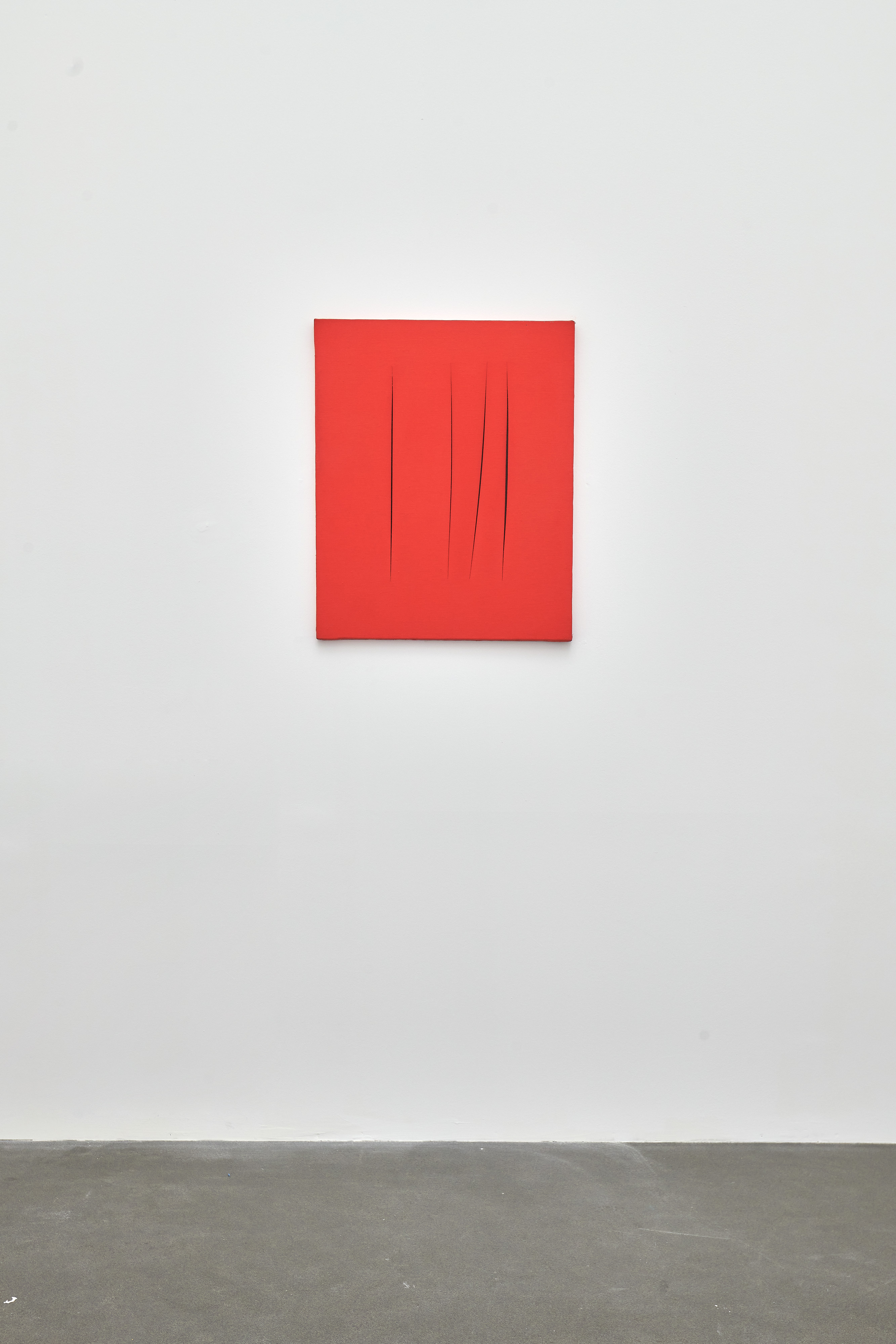Exhibitions
Interferences - Gala Porras-Kim
30.10.2025 - 22.03.2026
Interferences is a programme by Fondazione Cerruti that brings works by contemporary artists into Villa Cerruti, with occasional interventions at the Castello di Rivoli.
Gala Porras-Kim, Non-Consenting Collaborators
From Thursday 30 October 2025 to Sunday 22 March 2026
Non-Consenting Collaborators by Gala Porras-Kim is a project commissioned and curated by the Fondazione Cerruti, in dialogue with Morale of the Collection, the second issue of Quaderni di Fisica e Metafisica, taking place both at the Villa Cerruti and the Castello di Rivoli Museo d’Arte Contemporanea.
The project stems from the idea that the objects we see in collections are shaped by multiple actors, some of them non-consenting collaborators: the artists who create the works, the collectors who define their context, and the curators, conservators, and registrars who categorise and take care of their present display. In the context of Villa Cerruti, this aspect is heightened by the testamentary provision requiring that the position of the works remain unchanged from the collector’s original arrangement, creating a mise-en-scène that incorporate both the artworks he acquired and the furnishings that surround them. Gala Porras-Kim operates across these interpretative layers, generating shifts in meaning that connect the domestic sphere of the Villa Cerruti with the museological framework of the Castello di Rivoli.
The exhibition unfolds across two sites and reflects on forms of authorship and on the shifting boundaries between artworks and objects, and the contexts that influence the perceptions of them.
Understudies
The intervention focuses on an area of the Collezione Cerruti that is rarely seen: the collection items from the house museum’s kitchen – a space no longer (if ever) functionally used for food preparation and usually excluded from public view. Objects that are usually held in the cabinets and drawers of this room are transferred to the Castello di Rivoli, where their displacement temporarily redefines them as artworks.
At the Castello, the objects appear in a reconstructed setting that mirrors their original layout. The architectural context is reduced to an essential structure: recognisable yet stripped of function. A photograph of the original room offers a point of reference.
At the Villa Cerruti, the emptied kitchen is refilled with substitute objects drawn from the main collection’s storage, and opened for visitors to view. In theatre, an understudy is a performer who learns another’s part in order to be ready to step in on stage. Here, the objects take on that role, quietly overturning institutional conventions.
The kitchen objects, previously uncatalogued, are brought together in a new catalogue conceived as a material list for the installation that complements the overall project.
Neither official collection items nor disposable materials, these objects inhabit a suspended category – artefacts whose lack of visibility lies in their transitional state. The catalogue, together with the display labels, constitutes a crucial layer of the intervention, extending the institutional language of conservation and collection management into the realm of artistic authorship.
Non-Consenting Collaborators
A second intervention focuses on Concetto spaziale, Attese (1965) by Lucio Fontana, displayed in the Villa in a gilded frame personally chosen by Francesco Federico Cerruti and a glazing more recently added on for preservation. The work is presented in two parts – the painting and the frame with glass – shown side by side as a diptych.
The gesture reveals four intertwined layers of authorship:
– Lucio Fontana, the artist of the painting;
– Francesco Federico Cerruti, the collector who imposed his aesthetic through the frame;
– Luisa Mensi, the conservator who suggested the protective measures for the work;
– Gala Porras-Kim, the artist who makes this entanglement visible by separating its various elements.
During the show, the diptych will be shielded by a transparent panel in UVP acrylic fixed to the wall. However, during the first week of exhibition the painting will be displayed on its own, separate from the conceptual framework of Porras-Kim’s work, while its frame and glass will remain at Villa Cerruti. During this time it will be protected by a guard enforcing a safe distance between the viewers and the work.
In this sequence of gestures, Fontana’s painting takes a pause from its Cerruti-, Mensi- and Porras-Kim-enforced formal and conceptual costumes. Its fleeting emancipation from the Foundation’s script is immediately reabsorbed into other frameworks – the Castello’s care and the artist’s work – revealing once more the complex web of authorial contributions surrounding the artwork.
Gala Porras-Kim is an interdisciplinary artist based between Los Angeles and London. Through drawing, sculpture, and installation, her research explores how museums and institutions preserve, interpret, and attribute meaning to cultural artefacts, questioning the relationship between objects, time, and context. She has undertaken residencies at the Getty Research Institute in Los Angeles and the Radcliffe Institute at Harvard University, and recently at the American Academy in Rome. Her works are held in major public collections including the MoMA, Tate, and Whitney Museum, and have been exhibited at the Carnegie Museum of Art in Pittsburgh, Leeum Museum in Seoul, and Museo Universitario de Arte Contemporáneo, Mexico.
Gala Porras-Kim, Non-consenting Collaborators, 2025. Installation view, Fondazione Cerruti, Rivoli-Torino. Courtesy the artist. Ph. Luca Vianello and Silvia Mangosio
Gala Porras-Kim, Non-consenting Collaborators, 2025. Installation view, Fondazione Cerruti, Rivoli-Torino. Courtesy the artist. Ph. Luca Vianello and Silvia Mangosio
Gala Porras-Kim, Non-consenting Collaborators, 2025. Installation view, Fondazione Cerruti, Rivoli-Torino. Courtesy the artist. Ph. Luca Vianello and Silvia Mangosio
Gala Porras-Kim, Non-consenting Collaborators, 2025. Installation view, Castello di Rivoli Museo d’Arte Contemporanea, Rivoli-Torino. Courtesy the artist. Ph. Luca Vianello and Silvia Mangosio
Gala Porras-Kim, Non-consenting Collaborators, 2025. Installation view, Castello di Rivoli Museo d’Arte Contemporanea, Rivoli-Torino. Courtesy the artist. Ph. Luca Vianello and Silvia Mangosio
Gala Porras-Kim, Non-consenting Collaborators, 2025. Installation view, Castello di Rivoli Museo d’Arte Contemporanea, Rivoli-Torino. Courtesy the artist. Ph. Luca Vianello and Silvia Mangosio

